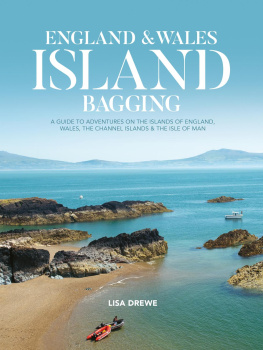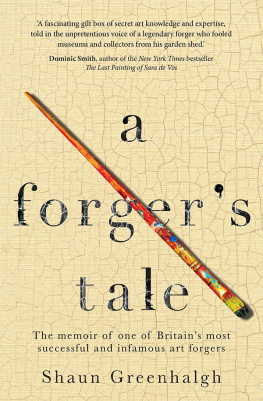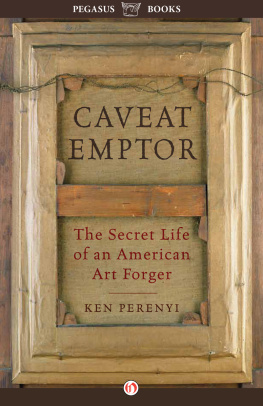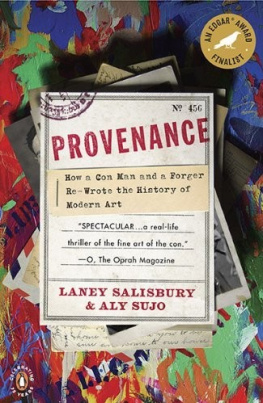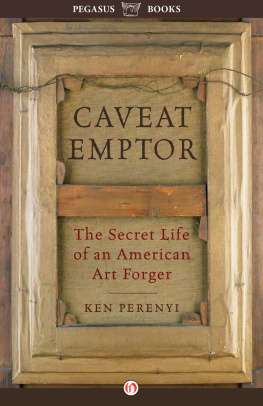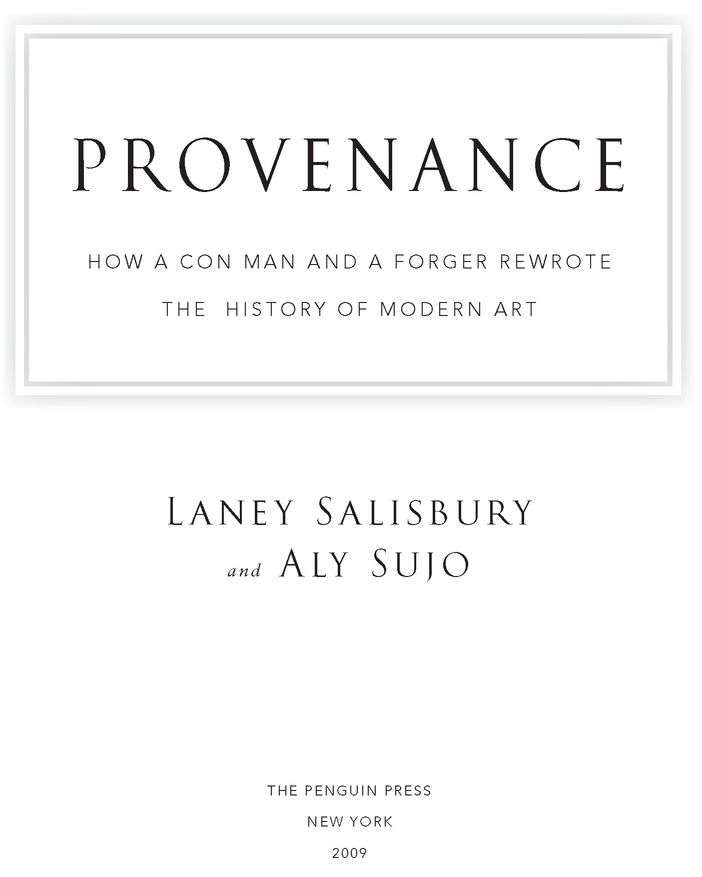Table of Contents
ALSO BY LANEY SALISBURY
The Cruelest Miles: The Heroic Story of Dogs and Men
In a Race Against an Epidemic
(coauthor Gay Salisbury)
FOR ALY SUJO, WITH LOVE.
AUG. 26, 1949-OCT. 4, 2008
DRAMATIS PERSONAE
THE GENESIS OF A SCAM
John Drewe
professor, physicist, man of many guises, and the brilliant mastermind of one of the great art frauds of the twentieth century.
Batsheva Goudsmid
Drewes common-law wife; once loyal, she is eventually the key to his downfall.
John Myatt
impoverished painter and single father who sees Drewe as his savior.
THE GUARDIANS OF THE ARCHIVES
Bill McAlister
head of the Institute of Contemporary Arts; cannot believe his good fortune when Professor John Drewe shows up with an interest in funding the upkeep of the ICAs rich archive.
Sarah Fox-Pitt
formidable doyenne of archive acquisition at the Tate Gallery whom Drewe reels in with lunches at Claridges and promises of historical documents.
THE ART DEALERS
Adrian Mibus
respected Australian gallery owner who falls for Drewes smoke and mirrors and buys several of Myatts fakes.
David Stern
Notting Hill dealer who unwittingly helps Drewes scam reach across the Atlantic to New York.
Armand Bartos Jr.
debonair New York dealer who still insists the Giacometti he bought is the best hes ever seen.
Dominic Taglialatella
New York dealer who is taken in by one of the more expensive Giacomettis.
Rene Gimpel
fourth-generation art dealer nagged by misgivings about a Ben Nicholson until his restoration expert, Jane Zagel, confirms his worst fears.
Peter Nahum
London dealer; among the first to alert Scotland Yards Art and Antiques Squad that hes been hoodwinked by a rogue.
THE UNWITTING PROVIDERS OF PROVENANCE
John Sperr
elderly antiquarian bookstore owner whose shop becomes a source of material and inspiration for Drewes elaborate provenance.
Father Paul Addison
head of a Roman Catholic religious order in England whose goodwill Drewe abuses to claim provenance of works from centuries-old priories.
Alan Bowness
former head of the Tate Gallery and son-in-law of the painter Ben Nicholson who innocently authenticates several fake Nicholsons.
Jane Drew
renowned British architect with close ties to Le Corbusier whom Drewe befriends, lending him a different kind of provenance: personal cachet.
Terry Carroll
physicist sufficiently impressed by the professor that he never questions Drewes professional provenance as a physicist until close to the end.
Daniel Stoakes
down-on-his luck childhood friend who agrees to pose as owner of a few works, only later to bemoan, I was like a ripe plum ready to be picked from the tree.
Peter Harris
larger-than-life personality with an early morning paper route and a penchant for war tales who Drewe fictitiously transforms into a fabled arms dealer and art collector.
THE SALES FORCE
Danny Berger
neighbor recruited by Drewe to expand his operation who successfully sells modern masters out of his garage.
Clive Belman
unemployed former jewelry salesman and actor who joins Drewes operation unaware that the product line he is hawking is the equivalent of costume jewelry.
Stuart Berkeley
a London-based runner who takes the operation worldwide.
Sheila Maskell
independent and reputable New York-based art runner who sends Armand Bartos the Giacometti Standing Nude that will eventually help break the case.
THE SKEPTICS
Mary Lisa Palmer
indefatigable director of the Giacometti Association whose persistent detective work puts her in conflict with the auction houses and galleries.
Jennifer Booth
Tate archivist who refuses to be swayed by Drewes benefactor status.
THE SLEUTHOUNDS
Richard Higgs
London detective who cannot pin a case of arson on John Drewe but knows a scam artist when he sees one.
Miki Volpe
scrappy detective from the Yards Organised Crime Unit who has never heard the word provenance but knows how to build a case, brush stroke by brush stroke.
Jonathan Searle
Scotland Yard detective with a Cambridge pedigree in art history who proves as skilled at spotting fakes as in tracking down thugs.
Its called a confidence game. Why? Because you give me your confidence? No. Because I give you mine.
DAVID MAMET
House of Games
PROLOGUE
One sunny April afternoon in 1990 two Englishmen strode up the steps of Londons Tate Gallery, passed beneath the imposing statues atop the pedimentBritannia, the lion, and the unicornand made their way through the grand portico into one of the worlds great museums. Both men had recently been welcomed into the narrow circle of curators, historians, and benefactors who gave the Tate its cachet, and today they were the special guests at a reception in their honor, to be held in one of the museums private conference rooms high above the galleries.
The more distinguished of the two was Professor John Drewe, a nuclear physicist with a pencil-thin mustache and gray-blue eyes. Drewe was often seen riding through London in a chauffeured Bentley and lunching at the most exclusive restaurants with members of the art worlds aristocracy. It was said that he had amassed an extensive personal art collection, and that he lived extremely well.
Today, as always, the professor held his head high. Everything about him, from his bearing to his clothes, suggested not just a gentleman of style and substance, but someone who expected deference in all his dealings.
The other honored guest was John Myatt, a different sort altogether. A struggling painter and onetime pop musician with a peasant face straight out of Bruegel, he looked as though he would have been happier trudging through the moorlands of Staffordshire than standing awkwardly in the Tates lobby in his charity-shop suit. Myatt, in attendance as Drewes personal art historian, took his every cue from the professor, whom he considered not only a business partner but a mentor as well.
A senior Tate staff member in a dark-blue Savile Row suit welcomed them and ushered them to the conference room upstairs. It was a large and impressive space, with polished wood floors, white walls, and bay windows looking out on the Thames. Around a solid oak table sat several of the Tates curators and senior staffers, including Nicholas Serota, the museum director, a slim, soft-spoken aesthete with rimless glasses, and Sarah Fox-Pitt, the formidable head of the Tate archives.
Like most other museums, the Tate was a privileged community run by a small army of art experts and archivists. Since 1988 it had been led with quiet imperiousness by Serota, who had taken over at a time when new funding was a priority. Along with every other British cultural institution under Prime Minister Margaret Thatchers free-market policies, the museum had been forced to compete for sponsors, and while it still received government grants, these hardly covered the major purchases and expansions Serota planned. He was dedicated to reinvigorating an institution that the




